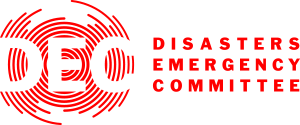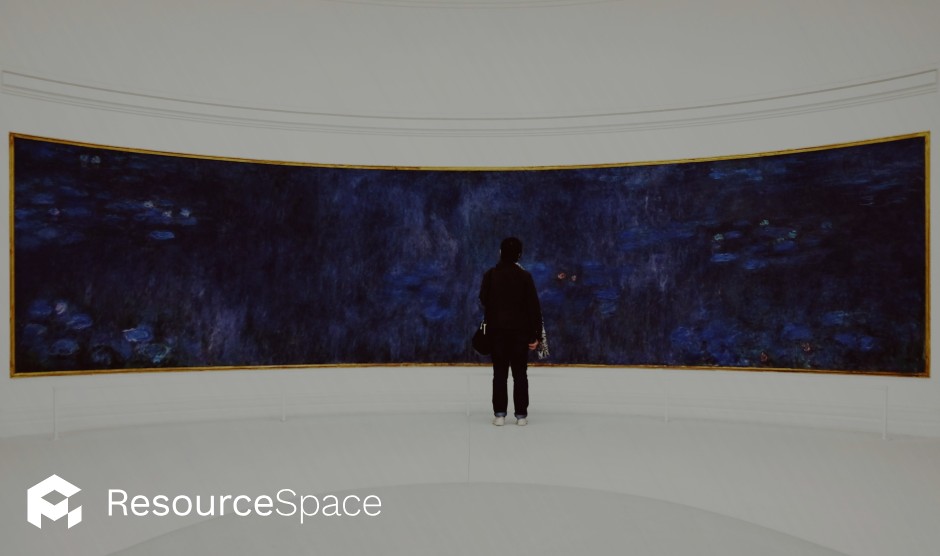
ResourceSpace has changed the way the DEC uses content, making it much easier for us to quickly make assets available both internally and externally during our emergency appeals.
Blog
20th June 2025

Museums are typically in the business of preserving the old; ancient artefacts from lost civilisations or historical works of art by long-dead artists.
With this in mind, the issue of copyright isn’t always top-of-mind for DAM Managers at the UK’s arts and heritage institutions—but this is a growing concern, particularly following a 2023 landmark legal case.
In this article we’re going to explore the key copyright challenges facing museums today, and how they can go about building a copyright-safe asset workflow.
Copyright is an increasingly important concern for museums, particularly as they expand their digital collections and share assets across online channels. As this digital shift accelerates, museums are increasingly handling a broader range of content which is protected by copyright, including photographs, artwork, archival materials, multimedia files and more. As these assets are published online on websites, digital exhibitions and external partnerships, the risk of infringing copyright grows, whether intentionally or not.
For a DAM Manager, having a clear understanding of copyright rules is essential to ensuring that the institution’s digital assets are being used appropriately and in compliance with usage permissions. This can be particularly challenging for historical content where ownership may be unclear or disputed, and museums must balance the goal of open access with their legal responsibilities, as well as ensuring that metadata accurately reflects these rights and restrictions.
What’s more, copyright laws vary by locality and can change over time, meaning DAM Managers and Compliance Officers need to regularly review policy updates. The growing use of AI image generation tools and content aggregation platforms is another issue museums must be aware of.
A landmark legal case in 2023 related to out-of-copyright items, THJ v Sheridan, has also had an impact on how British museums and DAM Managers understand copyright.
In the past, the bar for defining ‘originality’ was relatively low in the UK. Photographic representations of works simply had to result from ‘skill, labour and effort’ of photographers, but THJ v Sheridan reinforces a longer-term shift in what determines a work as ‘original’.
In the context of a museum, it’s now unlikely that a UK court would support the claim that a photograph of a 2D artwork would constitute a new copyright, but this change doesn’t affect copyright that may relate to the original artworks themselves. However, the National Gallery, British Museum, National Portrait Gallery and Victoria & Albert Museum all rely on the ‘skill and labour’ justification to assert copyright of photographs of 2D artworks that are themselves in the public domain.
With this case in mind, you might need to reassess how you store and share digital images of collections and specific works.
We’ve discussed the recent THJ v Sheridan case which impacts the digital recreation of 2D artworks, and this has had a big impact on what museums need to think about when it comes to copyright.
However, this isn’t the only issue impacting the arts and heritage sector, and there are four other common copyright challenges that museums face:
One of the most common causes of copyright infringement is accidental misuse, and this is only made more likely when licensing documentation is unclear or missing altogether.
Internal users and external stakeholders can’t know how not to use an asset if they can’t locate the related documentation, but keeping everything in one place is difficult when museum staff are working remotely or you’re relying on file storage solutions for storing content and documents.
Just because your institution has permission to use an asset in one location, it doesn’t mean you’re able to reproduce and republish it with impunity across every digital channel you own.
This is particularly a problem for institutions with siloed teams that don’t do a good job of communicating with each other. For example, you might only have permission to use a certain image on the website, but if this isn’t clearly communicated or controlled with access permissions, your digital marketing executive might republish the image across your various social media channels.
READ MORE: Promoting museum collections on social media beginner's guide
Without a dedicated single source of truth for all of your digital assets this will be a problem that comes up again and again, and could lead to frequent copyright infringements that take a lot of time, effort and money to resolve.
Turnover of museum staff poses a challenge for two reasons:
With this in mind, you should put in place a process for a clear handover between departing and new / remaining staff members to ensure copyright compliance doesn’t start slipping between the cracks.
There are two considerations museums need to make when it comes to digital content submitted by the public. Let’s consider an example in which a visitor to an art gallery takes photos of original artworks on display, shares them to social media and tags the gallery.
In this case, the gallery has to consider two things:
To avoid this creating an issue, put in place clear guidance and advice for internal stakeholders using public submissions and user-generated content.
We’ve looked at the common challenges that can arise for museums when it comes to handling copyright, but how do these institutions avoid them in the first place?
The first step in managing copyright is to centrally control your digital assets, and a Digital Asset Management system is the perfect ‘single source of truth’ for this.
A DAM will allow you to store all related digital assets in specific collections, and associate these assets with the related usage documentation. Platforms like ResourceSpace will also offer functionality that supports these efforts, for example Expiry Dates to ensure an asset cannot be accessed or used after a certain date has passed.
READ MORE: 9 Essentials for Museum Digital Asset Management software
The more internal team members have access to digital assets, the more likely it is assets will be used in a way that conflicts with your usage permissions.
ResourceSpace allows DAM Managers to set granular access and editing permissions, including at a team level as well as an individual user level, while you can also restrict access to specific assets altogether.
Setting policies and processes for managing copyright isn’t a set-and-forget activity, so make sure you’re conducting regular audits to ensure you’re staying compliant across the institution.
This involves reviewing if and how any copyright infringements have occurred, whether or not current policies are compliant with new legislation and how processes can be improved to make them even more robust.
ResourceSpace is trusted by arts and heritage institutions all over the world, including the History of Science Museum, the Walters Art Museum, Princeton University Art Museum and many more.
To find out more about how our DAM platform can support your copyright efforts and avoid the potential legal implications of asset misuse, get in touch with our experienced team today. Alternatively, click below to book a 30-minute ResourceSpace demo and Q&A session in which a DAM solutions expert will be able to show you all of the great features that make the platform the DAM of choice for so many museums.
#Copyright
#Museums
#LegalCompliance
#DigitalCollections
#DAMManagers
#IndustryNews
#BestPractice
#ResourceSpaceTips
#AIContent
#CulturalHeritage
#Metadata